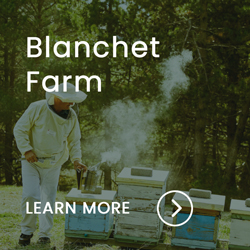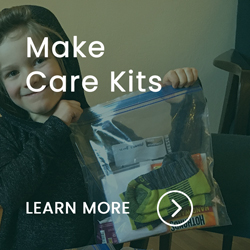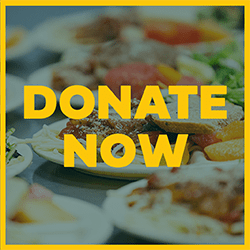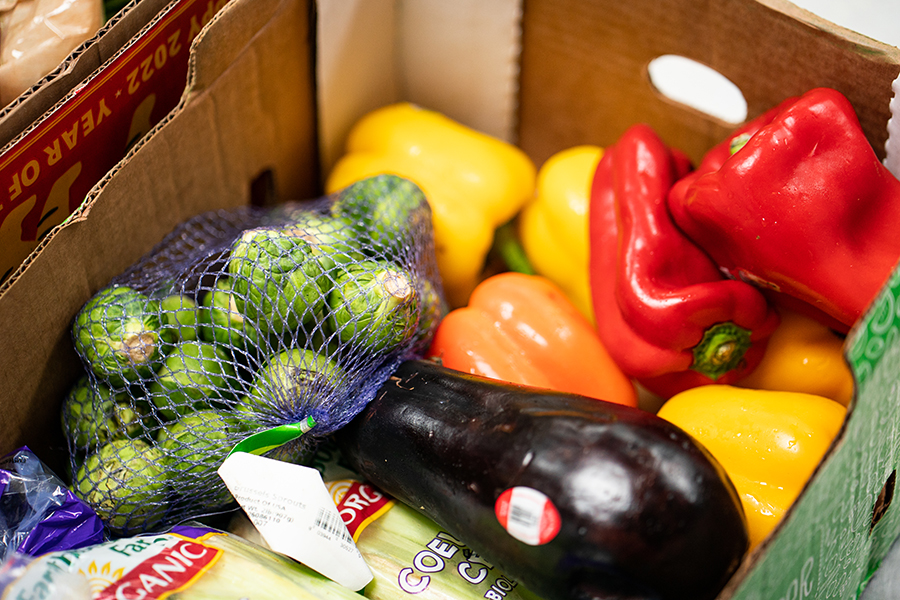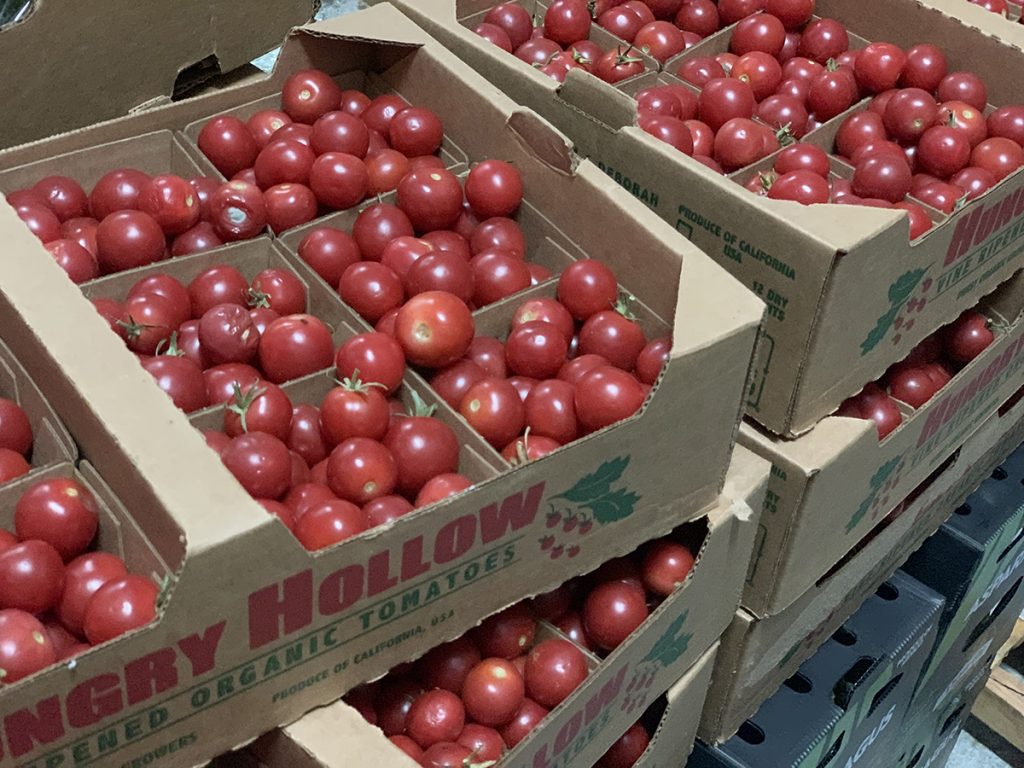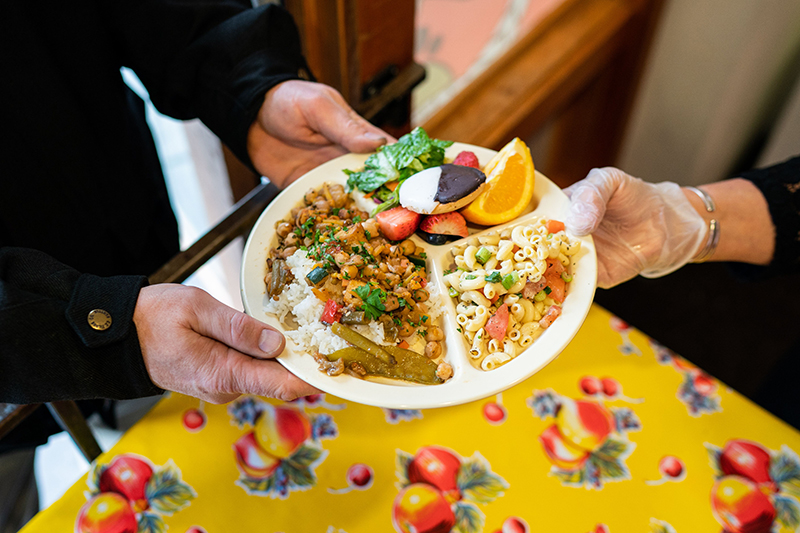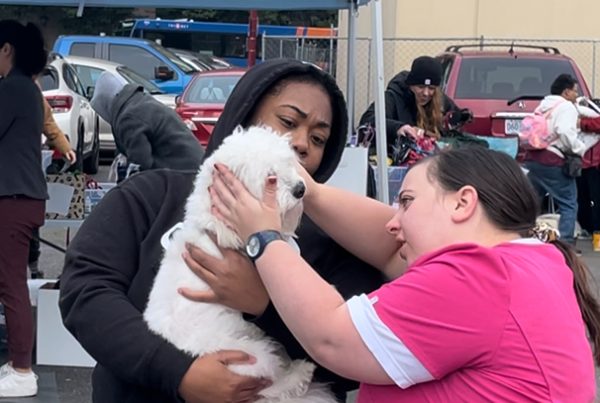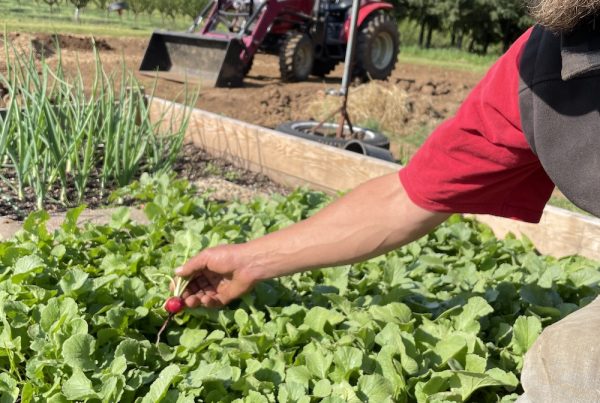A guide for understanding how to donate food safely to food banks and charity kitchens.
Blanchet House is well known for the thousands of meals we serve in our free café. But did you know that the majority of that food is donated?
Grocery stores, convention centers, wholesalers, and restaurants need to move out excess fresh produce, meat, dairy, and dry goods weekly to make way for newer products. This surplus food is a big problem for businesses. And there are hunger-insecure people who can eat it. Charitable food providers like Blanchet House have the capacity to safely take in some of this food.
We accept tons of unexpired or soon-to-expire food daily, inspect it for quality, and then prepare it into delicious meals for guests of our free café in Old Town. Blanchet House chefs can confidently accept donated food from our partners because they are required by law to follow strict health and safety guidelines.
We also receive inquiries about food donations from individuals and community groups. They often are not as well versed in food safety but still want to save good food to not go from going to waste.
Food donors often want to know if we can take certain items, and what would be considered “safe” to serve. There’s confusion around what’s acceptable to donate and what should be thrown away. Food expiration and use-by dates are often a common concern and I hope that this article can provide some answers and clarity.
Food Donation Laws
Federal and State Good Samaritan laws help protect donors from liability and encourage them to donate food.
The USDA writes of the federal law, “The Act protects persons who donate food and grocery products that meet all quality and labeling standards imposed by Federal, State, and local laws and regulations. The Act also extends liability protections to donors of food and grocery products that do not meet all quality and labeling standards if the donor informs the nonprofit organization that receives the items, the nonprofit organization agrees to recondition the items to meet all quality and labeling standards, and the nonprofit organization is knowledgeable of the standards to do so properly.”
This is great news in terms of liability for our donors and organizations that accept donated food, but it also poses a question.
Question: What are the “quality and labeling standards imposed by Federal, State, and local laws and regulations?”
Answer: Well, it’s a bit tricky, and I can’t blame anyone for being confused once they dive into the regulations.
Food Expiration Terms
We are all familiar with dating on different forms of food packaging, but did you know that, beyond infant formula, there is no universal definition for the date phrases you see on food packaging? The USDA gives some common examples, and what they generally mean:
- A “Best, if Used By/Before” date, indicates when a product will be of the best flavor or quality. It is not a purchase or safety date.
- A ”Sell-By” date tells the store how long to display the product for sale for inventory management. It is not a safety date.
- A “Use-By” date is the last date recommended for the use of the product while at peak quality. It is not a safety date except for when used on infant formula as described below.
- A “Freeze-By” date indicates when a product should be frozen to maintain peak quality. It is not a purchase or safety date.
OK, that does seem pretty standard. But what are the FDA recommendations on food donations? Mostly they warn about opened or leaking packages, dented or rusting cans, and odd odors or visible mold. But they also have a warning about dates:
- Don’t buy refrigerated foods that are past the “use-by” or “sell-by” dates, because these foods may be perishable and may have begun to spoil.
Local Food Regulations
So that covers federal regulations. What about state regulations? Surprisingly, many states don’t have them. A 2018 study from Harvard indicated that most states did not have meaningful regulations around donating food, which may be leading to a lack of donations and contributing to food waste.
Oregon Department of Agriculture does have some guidance, and there are local rules protecting donors. The Oregon Food Bank also has a nifty guide to shelf life to help explain some common misconceptions. But within both, there are phrases like “fit for human consumption” and “generally not a safety issue” that leave a lot open to interpretation.
Served with Dignity
At this point, you may be thinking that this information has only created more confusion about which foods can or can’t be donated. Dates can be confusing, terms aren’t identified, and a lot is left to interpretation. So, if you want to donate food, what do you do?
At Blanchet House of Hospitality, we are often serving people who are struggling with hunger and housing. Many of our guests are experiencing homelessness, and health issues are very common. When considering a donation, think about who will be receiving this food–someone who needs a nourishing meal. If you are considering donating something you wouldn’t eat yourself because it may have gone bad then it’s something that isn’t safe for our guests either.
If your donation passes this test, but you aren’t sure it will be useful, please give us a call! We have five professional chefs on staff who make sure our kitchen serves balanced meals three times a day, six days a week. Their culinary expertise helps us determine what is best to use in the preparation of meals for our community.
And if it’s no longer safe to eat, please remember to compost!
Come See for Yourself
If you want to learn more about how food donations can serve those in need, sign up to volunteer. Cafe volunteers plate food, serve guests, and bus tables. Chef volunteers with volume cooking experience are always welcome. Inquiries can be sent to volunteer@blanchethouse.org.
Jon Seibert is the Programs Director at Blanchet House.



